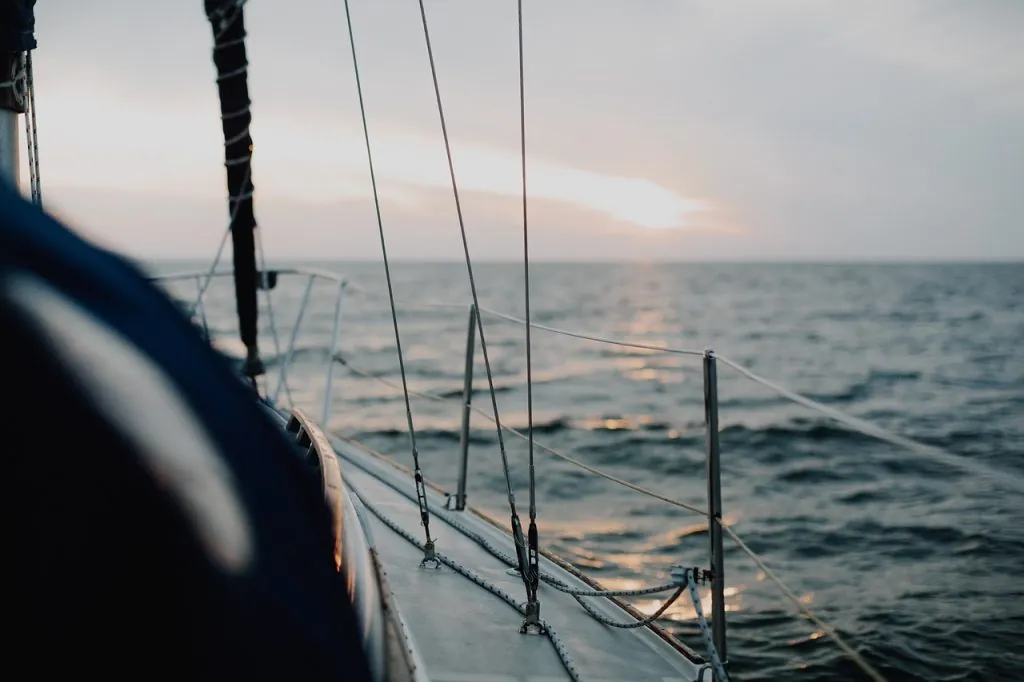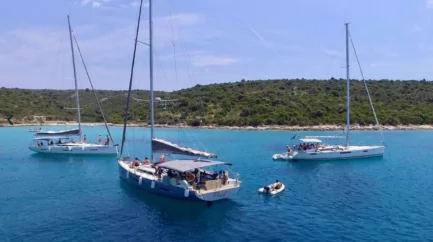Today we present a guest article
A sailing holiday is an adventure that offers both freedom and nature experiences. For a successful and safe sailing holiday, good planning and the right equipment are essential. This guide gives you tips and advice to prepare for your next sailing holiday, whatever your level of experience.
Embarking on a sailing holiday is an opportunity to experience nature and freedom at sea. To make your sailing experience as rewarding and safe as possible, it's important to prepare carefully - the right equipment and well-thought-out planning can make a big difference to your holiday.
In this guide, you can learn about some of the key steps to ensure you have everything you need for a sailing holiday, whether you are a beginner or an experienced sailor.
Table of contents
Clothing for sailing: water-resistant and comfortable garments
Choosing the right clothing for a sailing holiday is crucial for a comfortable and safe trip. The climate at sea can mean rapid changes in weather and varying temperatures - so it's important to pack clothes that are waterproof, comfortable and suitable for movement on board.
First of all, it is important to invest in a good sailing jacket to protect against rain and cold winds, and you should choose a sailing jacket that is both waterproof and windproof. Many jackets adapted for sailing also have reflective details for increased visibility, which is an important safety aspect.
When it comes to the bottom, water-resistant sailing trousers are a must - these trousers are usually designed with reinforced knees and seat to withstand wear and tear, and they also have adjustable waists and cuffs for an optimal fit. It's also important to think about footwear, as water-resistant sailing shoes with good grip are essential to avoid slipping accidents on board the boat.
You can easily check it out here to browse a wide range of sailing clothes and other equipment you may need to buy for your sailing holiday.

Safety equipment: Life jackets and emergency signals
When planning a sailing holiday, safety is always a priority, and one of the most important aspects of safety equipment is life jackets. Life jackets are a basic piece of safety equipment that everyone on board should use, regardless of the nature of the sailing or weather conditions. It is important to choose the right type of lifejacket for each person, taking into account their weight, size and activity level. Inflatable lifejackets are popular for their comfort and agility, while fixed lifejackets offer reliable buoyancy and are usually more visible in the water.
Emergency signalling is another critical component to include in safety equipment. Having the right equipment in place to signal for help can be life-changing if something goes wrong - distress signals can include distress flares or sound signals, for example, both of which are designed to draw attention to the position. It is also important to have a VHF antenna on board, which enables communication with other boats and the coastguard. By prioritising safety and being well prepared, you can enjoy your sailing holiday with greater peace of mind.

Packing tips: efficient organisation of luggage
Packing for a sailing holiday can feel like a challenge, but with the right strategy in place, you can organise your luggage in an efficient way that makes the trip both comfortable and practical. First of all, it's important to bear in mind that space on board is often limited, so choosing the right type of luggage is crucial - a soft suitcase or a duffle bag is preferable to hard bags, as they are easier to fit into tight spaces. In addition, it can be a good idea to choose bags that are water-resistant to protect your belongings from moisture and splashes.
When packing, start by making a list of the things you need to take with you. Divide your packing into categories, such as clothes, toiletries, food and safety equipment. For toiletries, you can use small travel containers for shampoo, conditioner and other products to save space. It can also be useful to have a first aid kit available, as well as necessary medication. By following these packing tips, you can ensure that you have everything you need for a sailing holiday, while keeping your luggage organised and easily accessible.
Route and anchorage planning: exploring new places
Completing a sailing holiday requires careful consideration of both the route and anchorages to ensure you experience new places. A well thought out route can make a big difference to how much you get out of your time on the water - start by deciding which areas you want to visit.
It can be a coastline, an archipelago or a lake with several islands, and you can use charts and navigation apps to get an overview of the different locations. Keep in mind that you can include popular destinations as well as lesser known places to get a varied experience.
Once you have a basic route in place, it is important to plan your anchorages. Anchoring in the right places can allow you to enjoy calm nights and beautiful views - research different anchorages in advance and take into account factors such as protection from wind and waves, depth and bottom conditions. It can also be useful to read reviews from other sailors to get a feel for the quality and accessibility of the site.
When you combine careful planning with flexibility, you can have a sailing holiday that allows you to discover a range of new places.

















